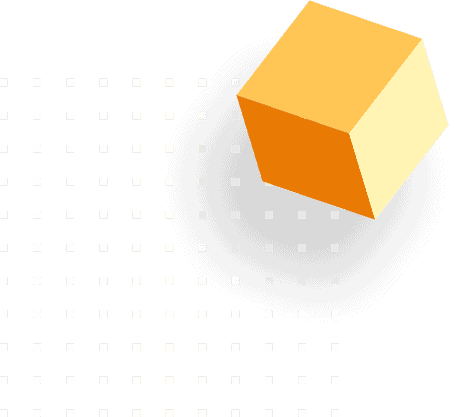The best breaking news apps give you all the latest headlines from around the world. They also keep you connected to the local news that affects you and your community. They do this by using your location or a list of interests you set up. Some apps even feature...

Newsletter
Subscribe for 25% Off
Related Posts
The Role of the Media in Promoting Democracy
A broad range of news sources supply political information. Print, broadcast and online news outlets known for their political journalism offer coverage of politics, effort information and election updates.Consistent conservatives and those with ideologically mixed...
How to Write a TurnT Up News Intro
The best news intro declares what’s important and why, so the reader will be drawn in. The worst ones leave too much to the imagination and make the reader likely to move on.Keke Palmer is a master of the genre, creating all five parts in her Facebook Watch series...
How to Grow Tomato Plants From Seed



You can easily grow tomato plants from seed indoors. The best time to start seedlings is four to six weeks before the last frost date. To grow tomatoes successfully, you need to follow certain procedures to ensure proper growth. You should also use a high-quality potting soil mix (available at Costco and other stores) as garden soil is not suited for the plant’s needs because it does not drain properly and is prone to disease. Once you’ve planted your seedlings, gently press them into the soil to remove any air pockets.
Growing tomato plants from seed
Growing tomato plants from seed is an excellent way to increase the number of tomato varieties available in your garden. It will also allow you to experiment with grafting and give your plants special care. You can start tomato plants from seed about six to eight weeks before you plan to plant them outdoors. You’ll want to start them in a sterile container to avoid soil borne diseases. Once the seeds germinate, plant them about 1/4″ (7mm) deep in the soil.
If you’re starting tomato plants from seed, you’ll need to provide them with warm temperatures. You’ll want to keep the temperature inside the propagator between 65-70 degrees Fahrenheit. You can also use grow lights or heat mats to help the seeds germinate. Be sure to check on the plants daily to make sure they’re getting enough light and heat.
Growing tomato plants from seed is a great way to get started with gardening. This method requires less money than buying plants from the store, and it doesn’t take a great deal of time or special skills. All you’ll need is a sunny window or plot and some patience. And you’ll have your own plants for many years to come.
Germination temperatures
Tomato plants from seed need a certain temperature range to germinate properly. Too low or too high a temperature may promote mold growth. The ideal temperature range is 65-85 degrees Fahrenheit. Here are some tips to help you achieve the best results. In addition to the proper temperature range, you should avoid soil conditions that are too dry or too hot.
Tomato seeds should be planted at least six to eight weeks before the average date of last frost in your area. Planting tomato seeds in this range will ensure that the plant will survive the cold season. Remember that temperatures below 32 degrees Fahrenheit are fatal for tomatoes. The resulting plants will take about three months to fully mature.
Tomato seeds can be started indoors or outdoors. Make sure the soil temperature is around 70 degrees. It should be kept moist but not wet. After germination, the seedlings should be placed under bright lights for six to eight weeks. In the meantime, you can transplant your tomato plants outdoors when nighttime temperatures are at least 10 degrees.
Soil pH
Getting the correct soil pH is crucial when planting tomatoes. A neutral pH level is 7.0. Anything lower than this indicates the soil is too acidic, and anything higher indicates the soil is too alkaline. To grow tomatoes successfully, the pH level in the soil should be in the range of 6.5 to 7.0. Luckily, there are several ways to test the pH of your soil. You can send a sample to a laboratory to test it, or you can buy a soil test kit and test it at home.
Whether you’re using a potting mix or growing from seed, you should know the pH of the soil. Tomatoes prefer soil slightly acidic. In fact, they grow best in soil with a pH of 6.5 to 7.0. If you’re using a commercial tomato seed starting mix, make sure to test the soil pH before using it.
The temperature of your soil should be at least 60 degrees Fahrenheit. Planting tomato seedlings in peat pots will require you to bury the stem in the soil. This will give the tomato seedlings room to sprout roots. These extra roots will help them absorb more minerals and strengthen the plant. They’ll also help the tomato plant avoid hot temperatures.
Watering
Watering is an important part of growing tomatoes from seed. Tomatoes need a lot of water during the first few weeks of growth, so you need to make sure you provide the proper amount of water daily. Once the seedlings are big enough, they will need more water about every two weeks. You can use a soaker hose or other irrigation devices to help with watering. Make sure to water deep enough to allow the soil to absorb the moisture. Check the moisture level near the roots by sticking your finger into the soil. You should also add mulch to prevent evaporation.
Tomatoes planted in containers need more water than those in soil. This is because the soil dries out more quickly in containers. To determine how often to water your tomato plants, you should check the soil’s moisture content every day or every other day. Check the soil moisture two inches below the soil surface to see how much water is needed.
Tomato seedlings should be thinned once their first two sets of leaves appear. Do not pull the seedlings out of the soil, as this could disturb the root system.
Protection from diseases
It’s important to protect your tomato plants from diseases. Tomatoes can be affected by a variety of fungi, including tomato blight. These diseases affect your plants’ leaves, causing spots. They can cause defoliation and reduced yields. You can treat the symptoms with neem oil or organic fertilizer.
Generally, it’s best to start seedlings in sterilized potting mix. After transplanting, apply three to four inches of organic mulch. This mulch may be wood chips, grass clippings, or straw that doesn’t contain weed seeds. Adding mulch to your tomato beds will help keep weeds and disease spores off of your plants.
Another disease to protect your tomato plants from is late blight. This fungus lives in the soil over the winter and infects the roots of tomatoes. This disease can also affect other vegetables, including eggplant and peppers. If you want to protect your tomato plants from this disease, you should rotate your plants, as this will prevent new plants from contracting the disease.
Late blight is one of the most difficult diseases to prevent, but there are organic fungicides that can be used to control the disease. To protect your tomato plants, you should avoid watering the plants when they are wet. Watering from the top will force the spores into the soil.
Terra cotta pots
You’ll need a sturdy container for your plants. While terra cotta is a common material for garden pots, you can also use fabric pots or galvanized metal troughs for the same purpose. Terra cotta, while durable, is porous and loses moisture quickly. You’ll want to make sure the container has drainage holes to keep water and air moving.
Support your plants – Tomatoes grow quickly and need support. Without it, they’ll be prone to breaking stems and making it hard to harvest fruit. You can use a tomato cage if you’re growing in a small space, but you’ll have to buy the largest size you can find. Alternatively, you can use plastic, wooden, or bamboo stakes to support your plants as they grow. Be sure to add a support system to keep the plants upright once they start to become heavy with fruit.
The best place for your tomatoes is a sunny spot with at least six hours of sunlight. You can also relocate them to different locations if necessary. Tomatoes need consistent moisture, so make sure you have a garden hose reel handy. Otherwise, you can use a watering can to water the plants when they need it.
Protecting young plants from wind
To protect young plants from wind when growing tomatoes from seed, you can use a cloche. This structure is made from plastic and can be used to protect the plants from frost and wind. It also traps sunlight and warmth to promote growth. A cloche can also protect plants from rabbits and birds.
Infections caused by fungal pathogens are also a concern. Two types of blight in particular affect tomatoes. Early blight is a soilborne disease caused by fungi called Alternaria solani, while late blight is transmitted through wind. Both of these diseases can be controlled by using disease-free seed.
To protect the plants from wind, use a gardening fabric to provide extra weight. Strong winds can cause the stems of the plants to break, which may cause them to die or not produce fruit. The fabric is thin enough to let the light penetrate, and it will also keep out insects and other pests. It can be secured with Velcro or masking tape.
Watering the seeds is very important to ensure they germinate properly. It is best to water your seeds once or twice a day. However, you should avoid over-watering them. You can water them with a watering can or a teapot, but it is better to use a spray bottle.
Sed ut perspiciatis unde sit
Join Us!
Exploring South Northants Leisure Maps: A Guide to Outdoor Adventures
Exploring South Northants Leisure Maps: A Guide to Outdoor Adventures 1. Introduction to South Northants Leisure Maps South Northants Leisure Maps is a valuable resource for those looking to explore the outdoors in the area. The maps provide detailed information on various outdoor activities, including walking trails, cycling routes, water sports, wildlife watching, camping and […]
Equipment Hire in South Northants: Everything You Need to Know
Equipment Hire in South Northants: Everything You Need to Know 1. Introduction to Equipment Hire in South Northants Equipment hire in South Northants is a convenient way to access a range of tools and equipment without having to purchase them outright. Whether you need to hire a small tool for a one-off job or larger […]
Discovering South Northants’ Best Free Activities: Exploring Nature, Arts, and Culture
Discovering South Northants’ Best Free Activities: Exploring Nature, Arts, and Culture 1. Hiking and Walking Trails: Discover the beautiful natural landscapes of South Northants through its numerous hiking and walking trails. South Northants boasts a diverse range of hiking and walking trails that wind through stunning natural landscapes. Whether you’re an experienced hiker or just […]
Exploring South Northants Café and Restaurant Scene
Exploring South Northants Café and Restaurant Scene 1. Introduction to the café and restaurant scene in South Northants South Northants is a vibrant and diverse region with a thriving café and restaurant scene. From charming cafés to fine dining establishments, there is something for everyone to enjoy. Whether you’re looking for a quick bite or […]
Discovering Fun Indoor Activities in South Northants: Your Guide to the Best Indoor Playgrounds
Discovering Fun Indoor Activities in South Northants: Your Guide to the Best Indoor Playgrounds I. Introduction Sure! Here’s your content for the “Introduction” section: Welcome to our guide to discovering fun indoor activities in South Northants! If you’re looking for ways to keep your kids entertained during rainy days or simply want to explore new […]
Testimonials from South Northants Leisure
Testimonials from South Northants Leisure 1. Introduction South Northants Leisure offers a wide range of facilities and activities for people of all ages. In this article, we will be sharing testimonials from some of our satisfied customers. From their experiences, we hope to give you an insight into what makes South Northants Leisure stand out […]
Team Building Activities in South Northants: Ideas for Fun and Engaging Events
Team Building Activities in South Northants: Ideas for Fun and Engaging Events 1. Introduction Team building activities are an essential part of any organization, as they help to foster collaboration, communication, and trust among team members. By participating in fun and engaging events, employees can develop new skills, strengthen relationships, and boost morale. In this […]
Relax and Rejuvenate with Spa Packages in South Northants
Relax and Rejuvenate with Spa Packages in South Northants 1. Introduction to spa packages in South Northants South Northants is a beautiful region in the UK, known for its stunning countryside and picturesque towns. If you’re looking to escape the hustle and bustle of city life, why not try one of the many spa packages […]
Exploring South Northamptonshire’s Rich Cultural Tapestry Through Engaging Activities
Exploring South Northamptonshire’s Rich Cultural Tapestry Through Engaging Activities 1. Introduction to South Northamptonshire’s cultural heritage South Northamptonshire boasts a rich and diverse cultural heritage, weaving together threads of history, art, music, and cuisine to create a vibrant tapestry. From ancient Roman ruins to medieval castles, the area offers a wealth of historical landmarks and […]
Exploring the Best Golf Courses in South Northants
Exploring the Best Golf Courses in South Northants I. Introduction South Northants is a region in England known for its picturesque landscapes and rolling hills. It’s also home to some of the best golf courses in the country, offering golfers of all skill levels a chance to enjoy the sport in a beautiful setting. However, […]


0 Comments